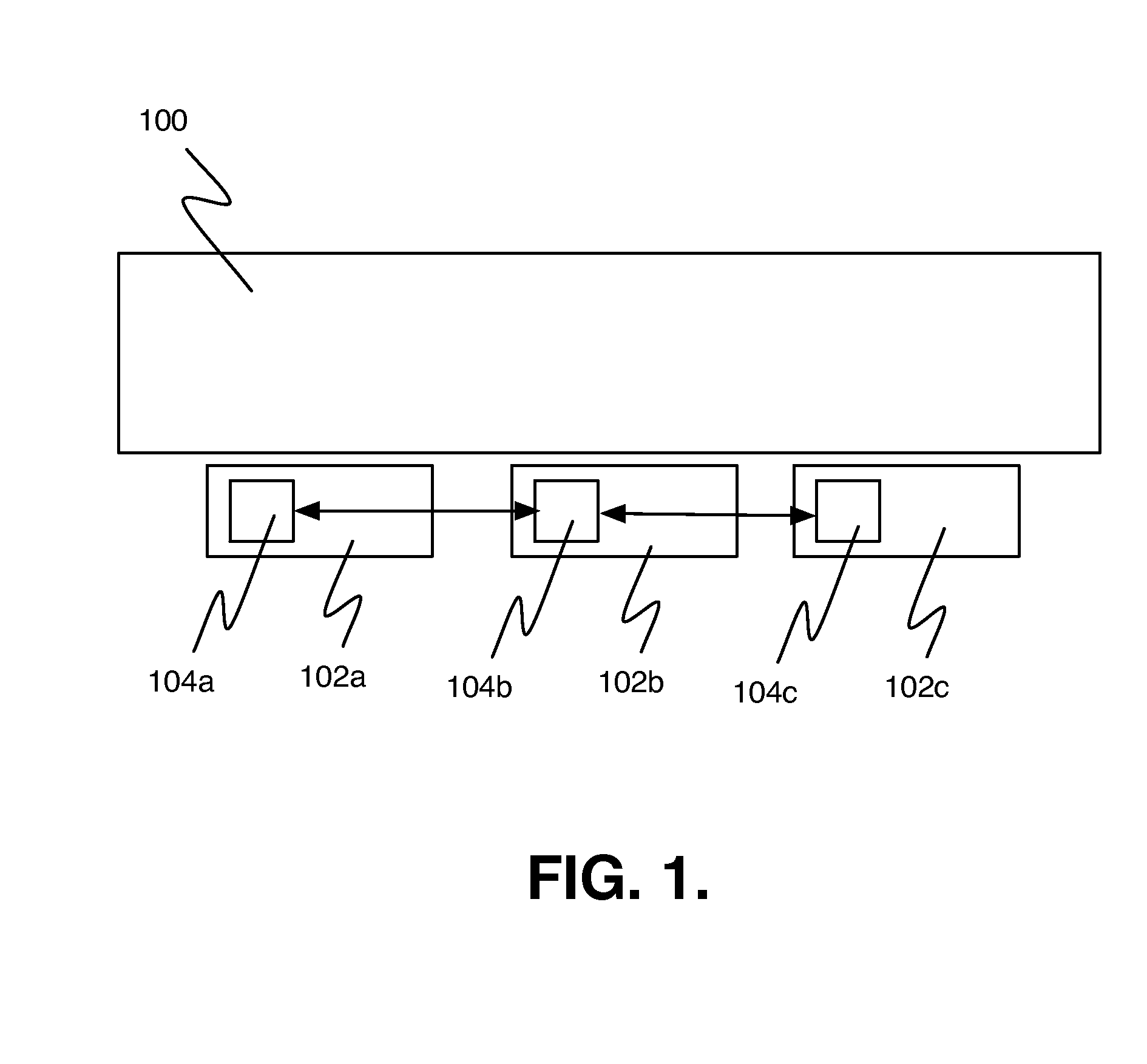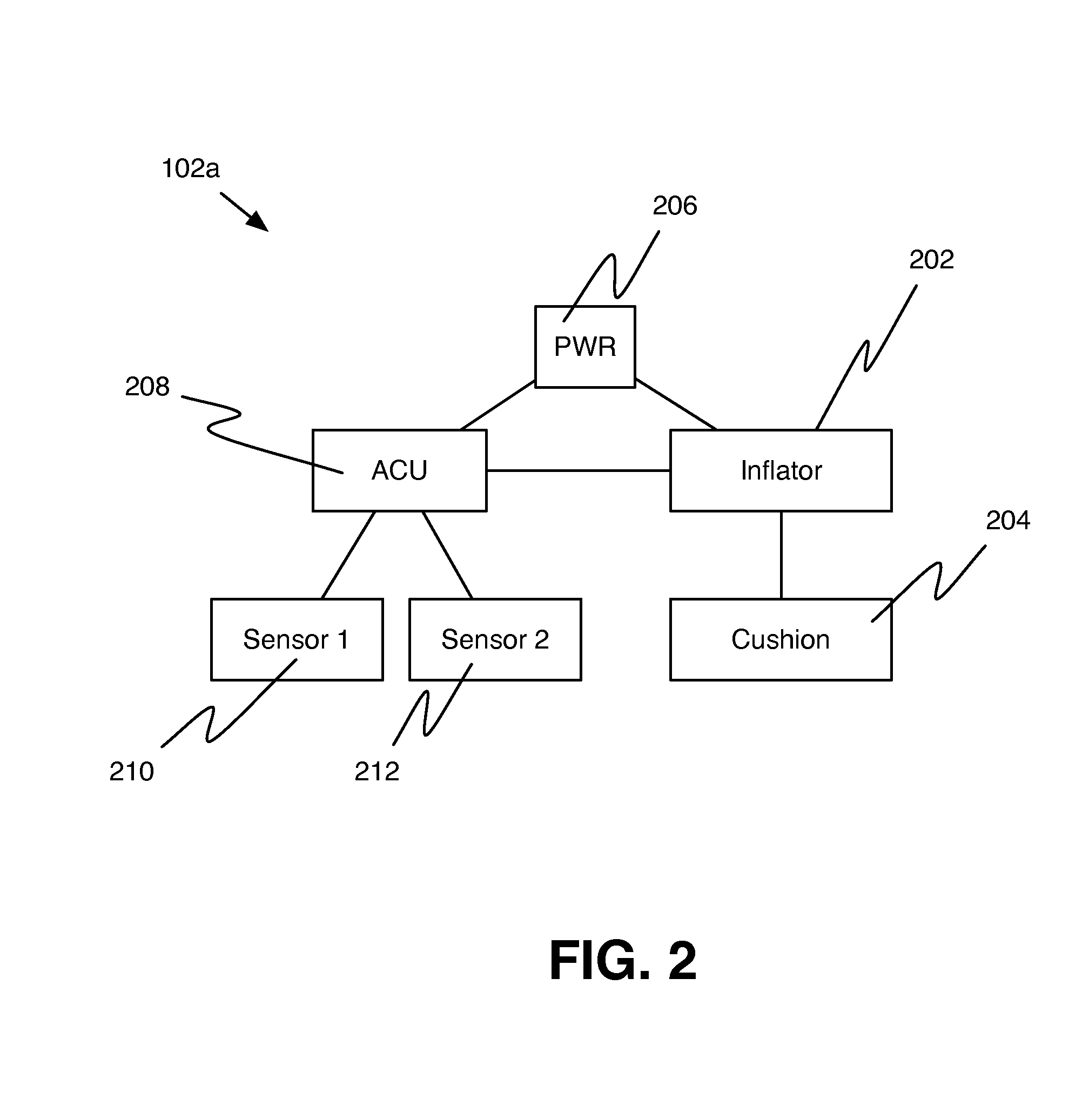Autonomous airbag system for unmanned aerial vehicles
an airbag system and unmanned aerial vehicle technology, applied in the field of flying devices, can solve the problems of uncontrollable or limited control landing of the uav, relative slow and relatively fast movement of the uav
- Summary
- Abstract
- Description
- Claims
- Application Information
AI Technical Summary
Benefits of technology
Problems solved by technology
Method used
Image
Examples
Embodiment Construction
[0032]Referring now to the drawings, particularly by their reference numbers, FIG. 1 is an illustration of an unmanned air vehicle (UAV) 100 including here autonomous airbag units (AAU) 102a, 102b and 102c (hereinafter collectively referred to as AAUs 102), in accordance with an embodiment of the present disclosure. The AAUs 102 are safety devices installed at a bottom portion of the UAV 100, for minimizing damage to an object when the bottom portion of the UAV 100 collides with the object. The AAUs 102 includes airbag cushions that are inflated, when the UAV 100 is about to collide with an object in the event of an emergency landing.
[0033]In a collision, a force acts upon an object for a given amount of time to change the object's velocity. The product of force (F) and time (t) is referred as impulse (I). The product of mass (m) and velocity change (delta v, Δv) is known as momentum change. In a collision the impulse encountered by an object is equal to the momentum change it exper...
PUM
 Login to View More
Login to View More Abstract
Description
Claims
Application Information
 Login to View More
Login to View More - R&D
- Intellectual Property
- Life Sciences
- Materials
- Tech Scout
- Unparalleled Data Quality
- Higher Quality Content
- 60% Fewer Hallucinations
Browse by: Latest US Patents, China's latest patents, Technical Efficacy Thesaurus, Application Domain, Technology Topic, Popular Technical Reports.
© 2025 PatSnap. All rights reserved.Legal|Privacy policy|Modern Slavery Act Transparency Statement|Sitemap|About US| Contact US: help@patsnap.com



